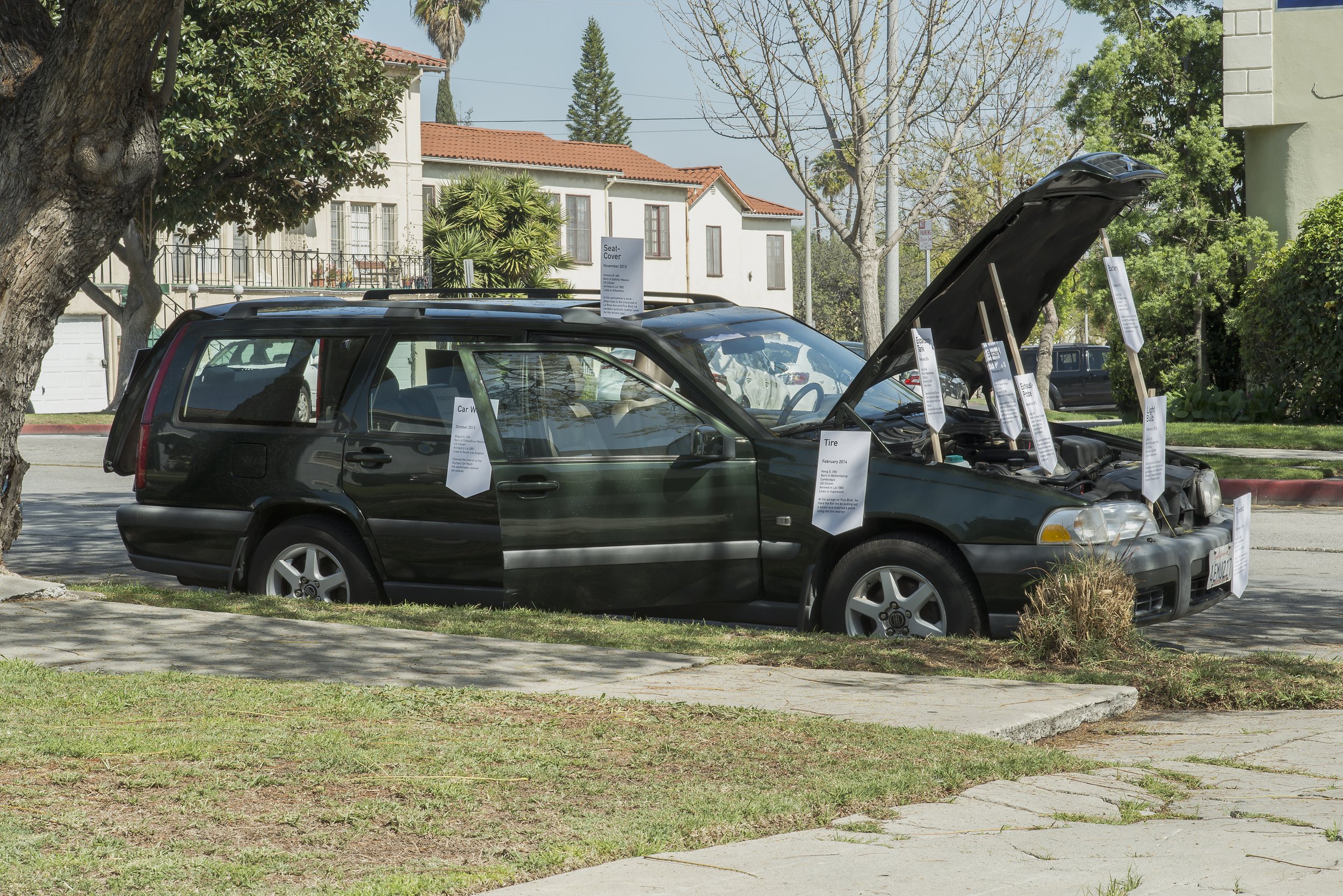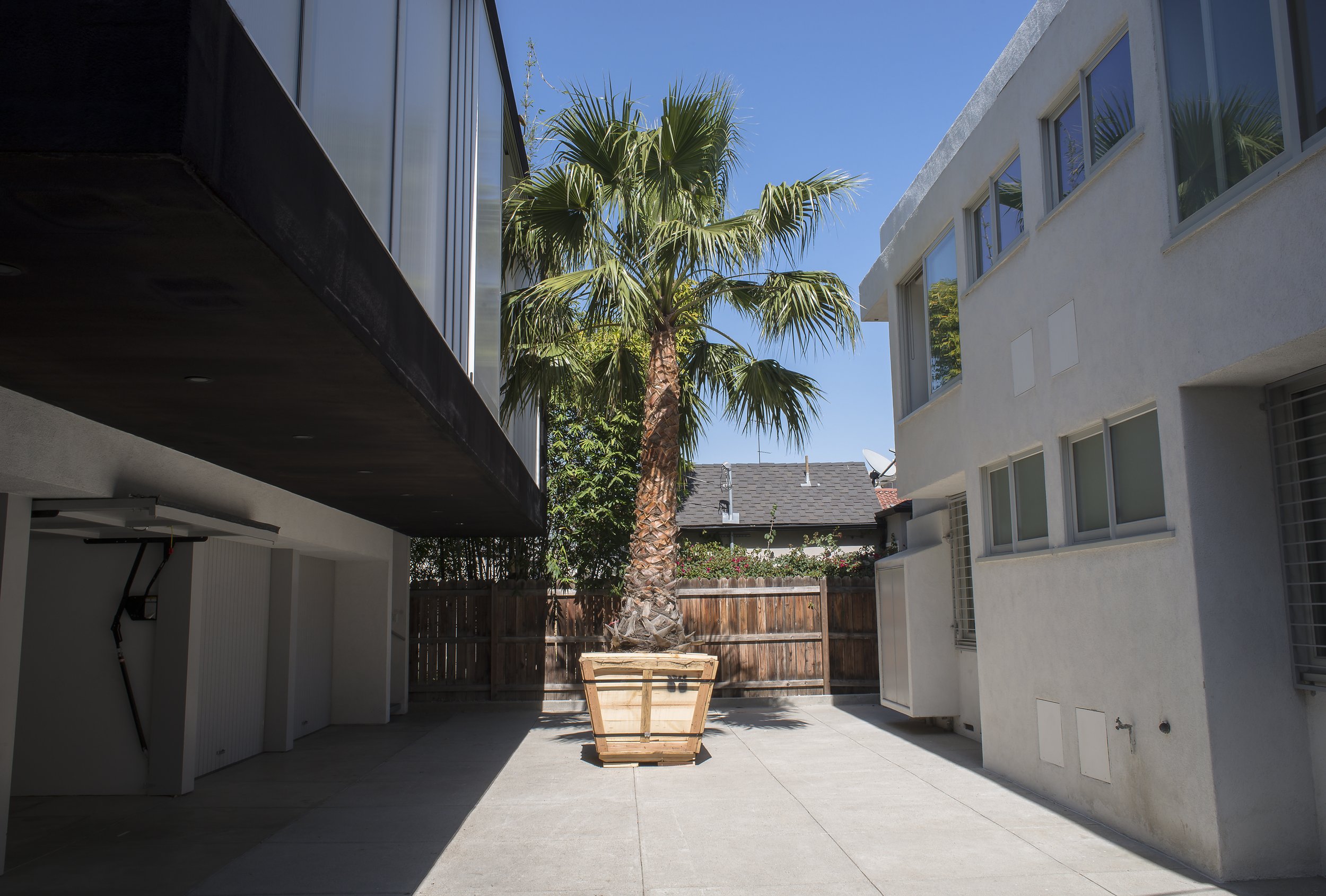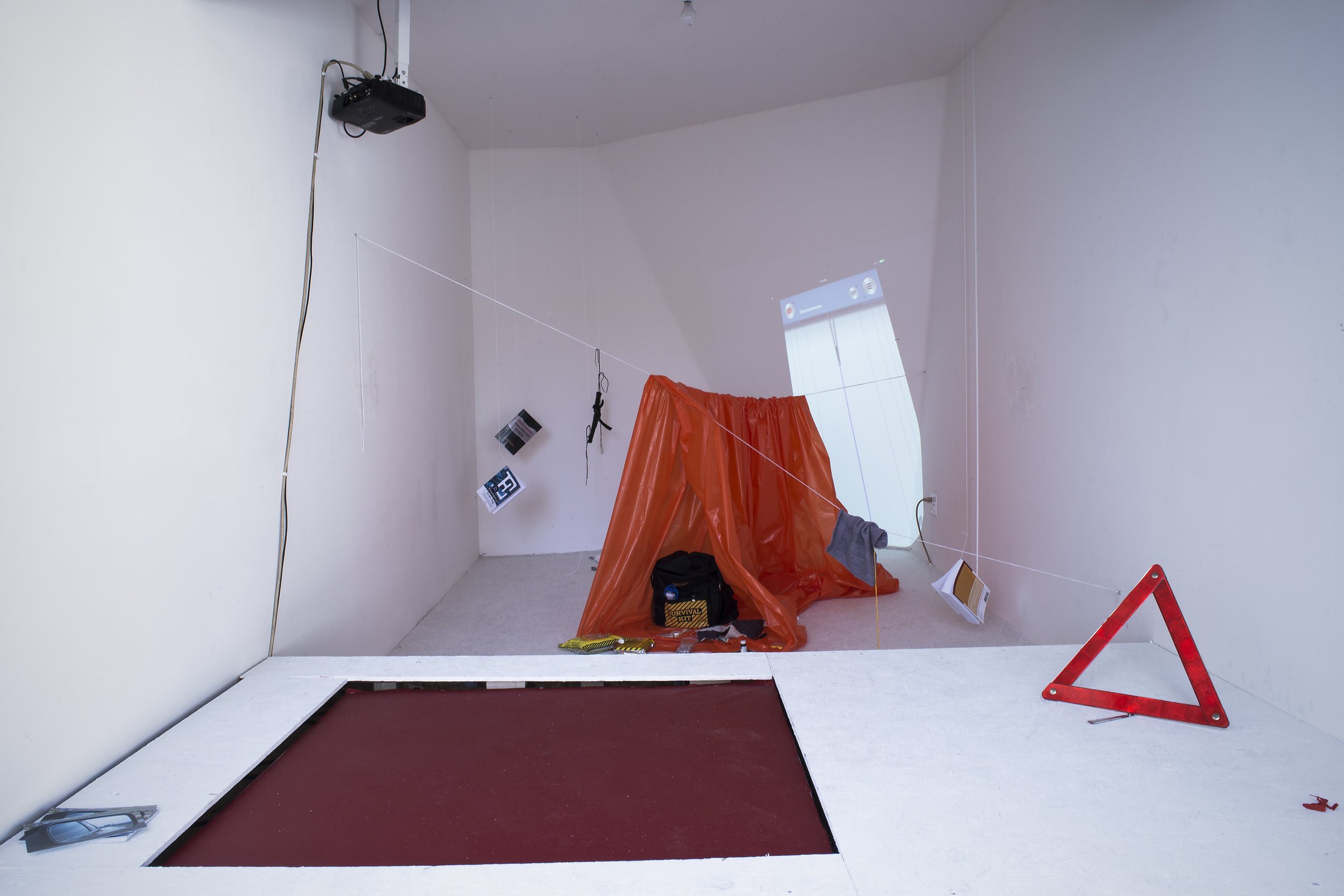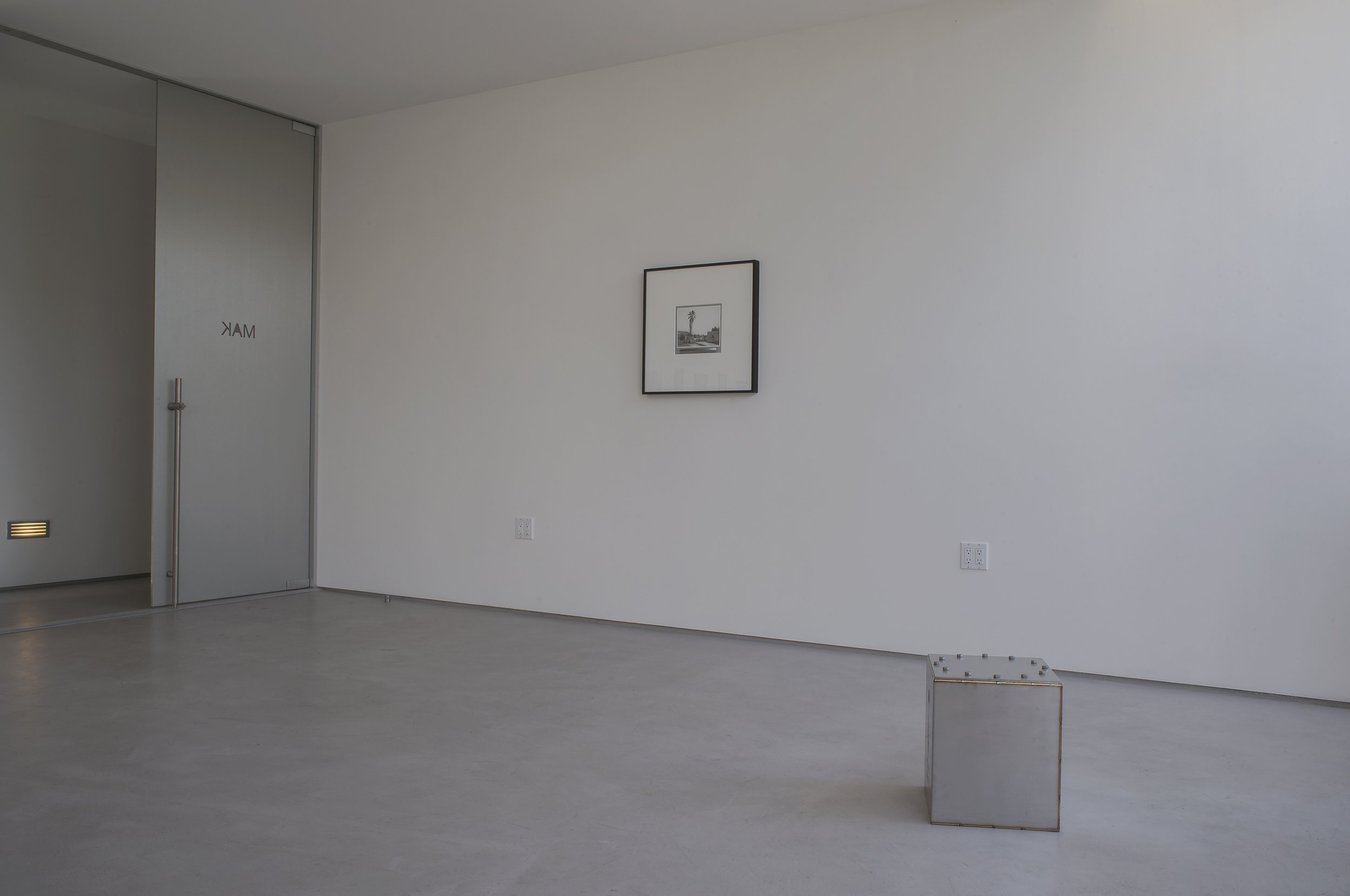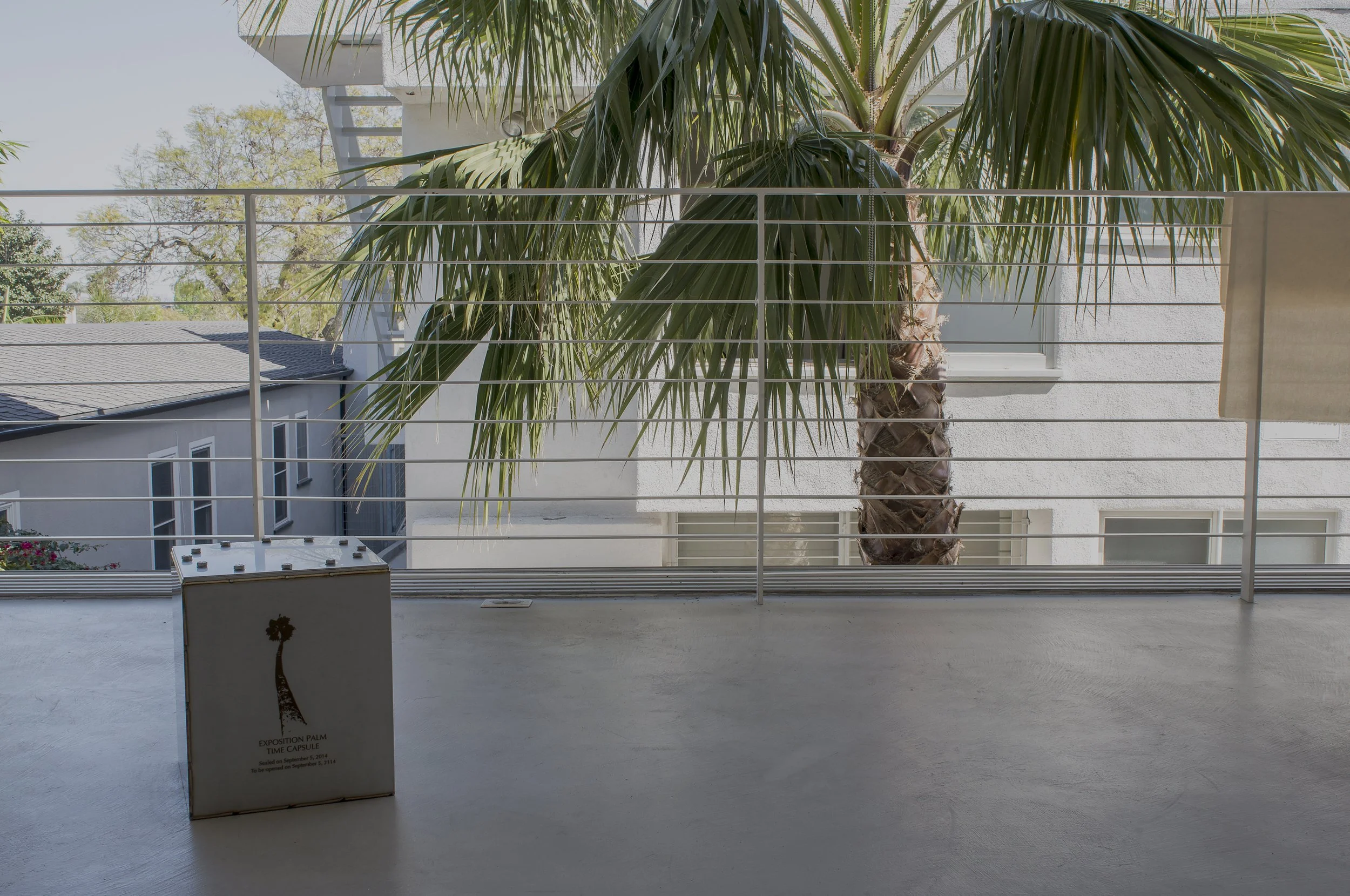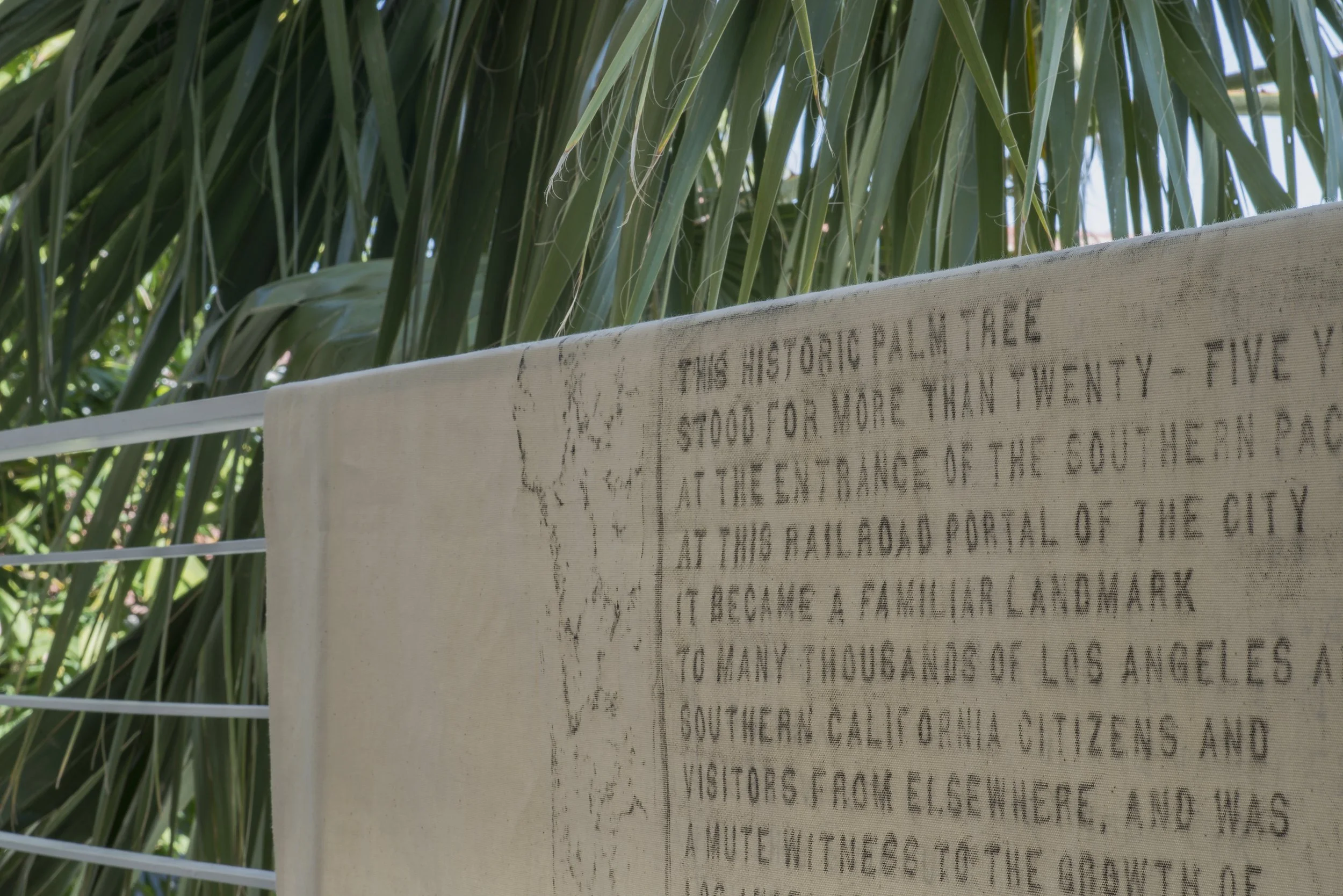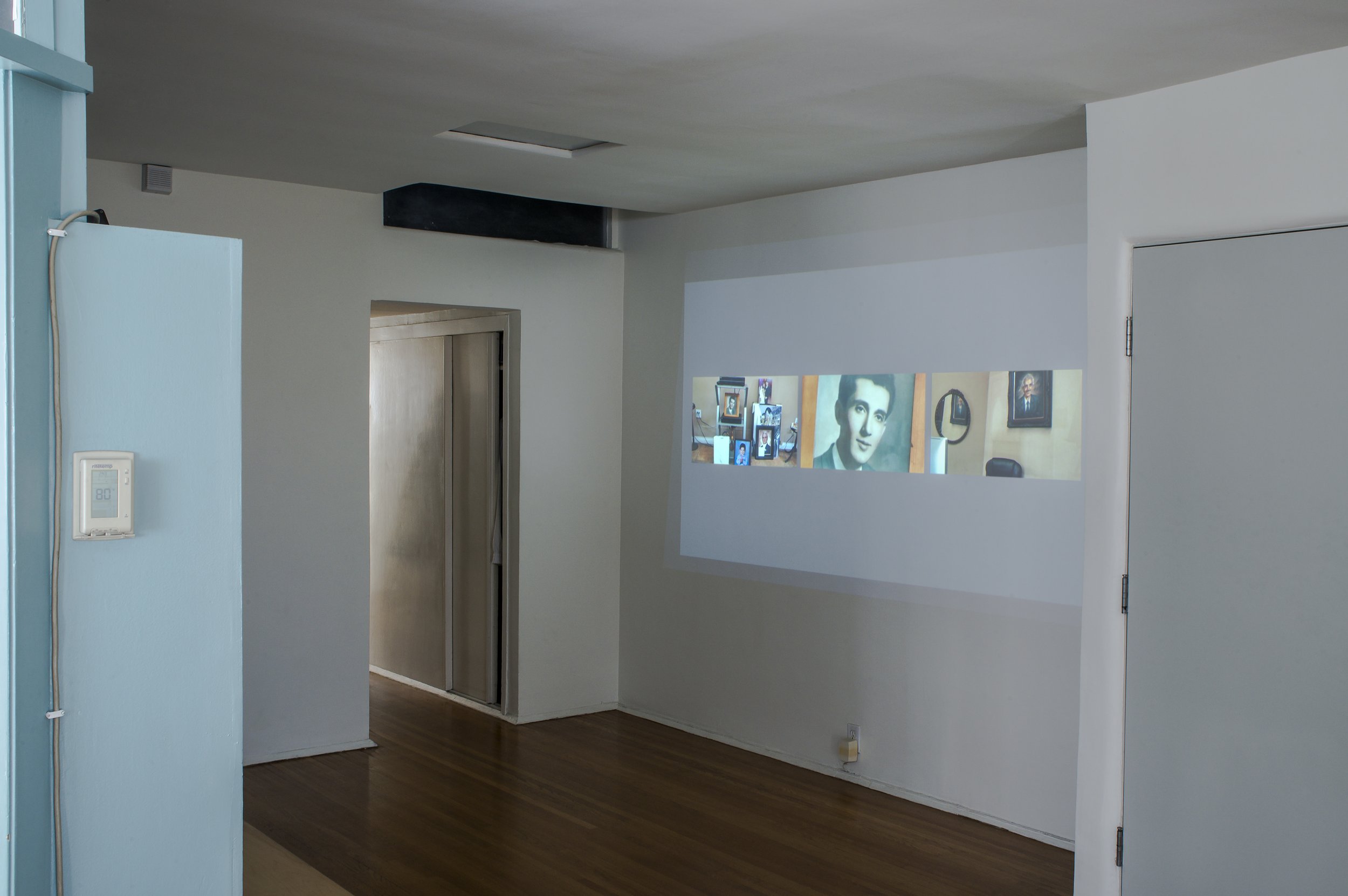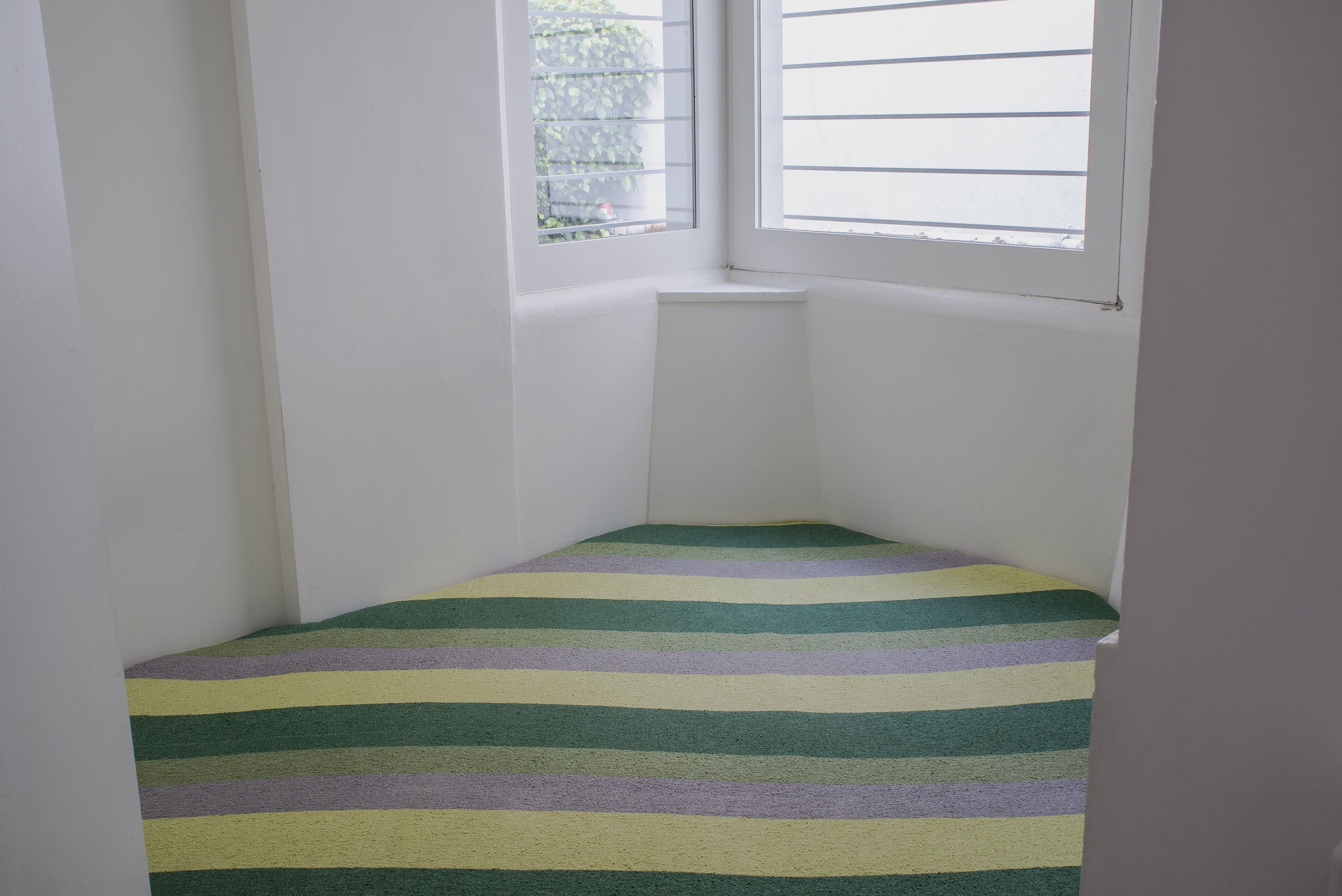Installation view of Final Projects: Group XXXVII - jaywalk. Photography by Mark Escribano, 2014.
Artist Christian Mayer shared his focus on an Exposition Park palm tree. At 170 years, this tree is one of the oldest living things in Los Angeles that can be evidenced with photographs. During its lifespan, the city has transformed from a small pueblo to megalopolis, and the tree itself has been relocated from quiet Palm Springs to the front of the historic train station in the 1880s where it symbolized California to the newly arrived, to its current bucolic park setting, its service commemorated with a plaque.
For jaywalk, Mayer presented material for a time capsule to be buried near the tree on the 100th anniversary of its move to Exposition Park. Video and photographic works formed an installation in the Garage Top. A real palm of the same species (Californian Fan Palm) stands in the Mackey Courtyard, boxed to echo the mobility of the original.
From time spent in master-planned social housing sites of the 1930s-40s, as well as research into a mobile home designed by R.M. Schindler, artist Heidrun Holzfeind has delved into the user experience of modern architecture in Los Angeles. For jaywalk, she presented a series of self-portraits in yoga poses, inscribing her body into the interior architecture of the Mackey Apartments. In homage to artist VALIE EXPORT’S series Körperkonfigurationen (Body Configurations), Holzfeind’s new series of photos uses the body as a kind of measuring device to consider the relationship between the user and architectural space.
With similar intentions, Holzfeind transformed the dining nook in her kitchen into an extra bedroom, exchanging the built-in benches and table for a bed with a wall-to-wall, eleven-sided mattress. The mattress pad transferred the peculiar shape and three dimensional space of the nook-reminiscent of a trailer, crystal, spaceship or womb-into a polygonal object, which can be variously used as a giant floor pillow, an object hung on the wall, or a space to read or contemplate.
Architect Johannes Zotter has become engaged with a Los Angeles obsession: the ever-impending, catastrophic earthquake. Emergency preparedness kits are required decoration in the majority of L.A. homes and automobiles, and Zotter examines the logic of the earthquake in the cultural psyche of Southern California.
A video and kinetic installation in the Mackey Garages mimicked the experience of an earthquake.
Artist Deniz Sözen has navigated Los Angeles by its ethnic enclaves, from Chinatown to Koreatown to Little Armenia and Little Ethiopia. Arguing that a key component of the American city are these neighborhoods where previously un-associated cultures are placed side-by-side and expected to coexist, Sözen has produced an experimental documentary video exploring multiculturalism in Los Angeles. The video presents a case study of two such spatially overlapping areas: Little Armenia and Thai Town in East Hollywood.
Called transangeles and shown in her apartment, the video composed of interviews with leading figures of those communities and an aesthetic exploration of how visual elements and architecture contribute to the performance/staging of cultural identity and belonging. As a self-reflexive appendix to the installation, the artist put up a street sign in front of the Mackey Apartments, designating the zone as “Little Austria.”
Architect Michael Hieslmair has traveled all around the region in search of nodes of mobility and migration. From hotels to bus stations to the Department of Motor Vehicles, Hieslmair has used such locations as case studies for the ways in which L.A., and every city, is part of a network shaped by transnational connections and specific zones that modulate the exchanges between it and the rest of the world.
Hieslmair presented both an installation and a three-part workshop at the Mackey Garages in collaboration with L.A.-based urban planner James Rojas and urbanist Kyong Park. The Push and Pull! workshops (February 17, March 9, and March 13) were open to the public and invited participants to contribute stories about their mobility and migration experiences. His installation covered the courtyard and driveway of the Mackey site to create a map of the Los Angeles Basin, highlighting three specific movement patterns the architect has observed.
This exhibition was made possible by the Austrian Federal Chancellery.

